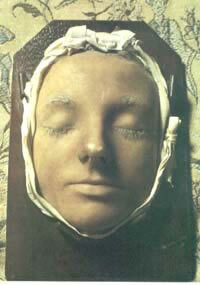Mary’s first 20 years were an amazing roller-coaster of a life. She spent the last 20 years imprisoned and was then beheaded.
Born in Linlithgow Palace (north east of Edinburgh), only surviving child of James V King of Scotland, who died 6 days after her birth. Fourth in line to the English throne she was encouraged by all involved in her upbringing to believe that she could become Queen of England. Engaged very young to the Dauphin of France she had a Catholic upbringing in France, alongside her fiancé. Briefly Queen of France but on her husband’s death she was demoted to dowager Queen so she returned to Scotland, which was now Protestant. Here she ruled, while privately continuing as a Catholic. Her taste in men was not good. She married Darnley primarily so she could have her son James, who she hoped would become King of a united Scotland and England and, for a while, Elizabeth I did seem likely to formally name James as her successor. Darnley behaved badly at not being allowed to play the king of Scotland role that he wanted. This led to his murder, possibly instigated by Mary in league with Bothwell, who became her third husband. He also was disliked, to the extent that civil war threatened. Mary gave herself up into captivity in his stead. In prison she was forced to abdicate in favour of her 13-month-old son, James. She then managed to escape and threw herself on Elizabeth’s mercy. But Elizabeth just sent her back to prison and eventually had her beheaded at Fotheringhay Castle, Northamptonshire.
"Little Miss Muffet
Sat on a tuffet
Eating her curds and whey.
Along came a spider
That sat down beside her
And frightened Miss Muffet away."
This verse first appeared in print in Scotland in 1805. One of Mary's (Miss Muffet's) chief opponents in Scotland was John Knox (the spider), the Protestant reformer and founder of the Presbyterian church in Scotland. He would say things like "how abominable before God is the empire or rule of a wicked woman, yea, of a traiteresse and bastard", thus contributing to her feelings of rejection and her eventual flight to England.
The National Portrait Gallery have an interesting take on this royal personage: "... the first woman to regularly play golf. She learned the game at an early age and played during her childhood in France. As a member of the French royal family, military cadets would have carried her golf clubs." the word evolving into 'caddie'.












Comments are provided by Facebook, please ensure you are signed in here to see them